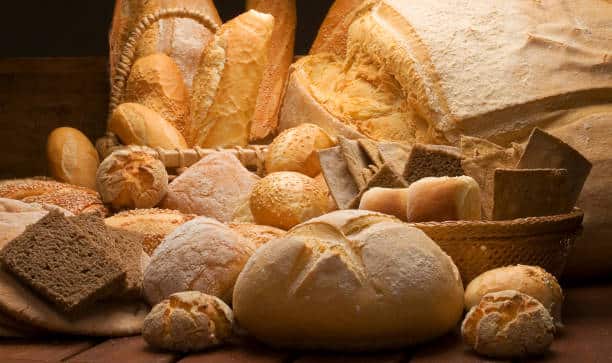What Kind of Bread Can a Diabetic Eat?-Overview
Bread is a basic item that is enjoyed all over the world and is considered a major source of carbohydrates in the dietary pyramid. It’s commonly made with a dough made of wheat flour, leavening agents, and water that’s baked.
Gluten is a protein found in wheat that gives dough its cohesive and stretchy properties. Wheat is being replaced by alternative grains since the presence of gluten makes bread inappropriate for those with celiac disease.
A bread grist may contain 80 percent or more locally sourced wheat in a reasonably good season. With advancements in wheat breeding and biotechnology, this figure is projected to grow.
However, local wheat may not always be sufficient enough to be utilized in all types of bread and baked goods, and this region will not be capable of surviving without a little imported wheat in the time coming.
Currently, between 700,000 and 900,000 tons of wheat are imported for cooking and baking, the majority of which comes from North America.
Health Benefits of Bread
The bread offers many benefits to human health, some of which include:
Contributes to the daily carbohydrate requirement
Bread provides the body with calories mainly from carbohydrates, and carbohydrates are the body’s preferred source of energy, so eating bread provides the body with the energy needed for daily activities.
Bread also contributes to balancing blood sugar levels, it should be noted that approximately 170 grams of cereal products, such as bread, which is also low in fat, are recommended to cover the daily calorie intake of 45% to 65% of the total calorie intake.
Vitamins and minerals
The bread contains vitamins B, which contributes to the metabolism of proteins, vitamin E and selenium which possess antioxidant properties, other minerals such as iron important for cell growth and oxygen delivery, potassium which preserves the functioning of the body’s cells, as well as calcium that contributes to increased bone density.
Rich in fiber
Bread made from whole grains contains fibers that possess many health benefits and that affect the weight loss process; Eating fiber-rich foods helps increase saturation, reduces food intake, reduces calorie intake.
It should be noted that whole wheat bread may help reduce constipation.
What are the Types of Bread?
There are many types of bread, with more commonly used ones are:
• Banana Bread
• Baguette Bread
• Breadstick Bread
• Brioche Bread
• Challah Bread
• Ciabatta Bread
• Cornbread Bread
• Focaccia Bread
• Multigrain Bread
• Pita Bread
• Pumpernickel Bread
• Rye Bread
• Soda Bread
• Sourdough Bread
• Whole Wheat Bread
• Keto Bread
What is the Nutritional Content of Bread?
The bread, as we mentioned, is rich in dietary fibers, vitamins, minerals, and other important nutrients. The following table shows the nutritional content for every 100 grams of bread:
| Content | Amount |
|---|---|
| Calories | 265 Kcal |
| Total Fat | 3.2 g |
| Saturated Fat | 700 mg |
| Trans Fat | 92 mg |
| Double Unsaturated Fat | 1.6 g |
| Single Unsaturated Fat | 600 mg |
| Cholesterol | 0 mg |
| Sodium | 491 mg |
| Total Carbohydrate | 49.1 g |
| Dietary Fiber | 2.7 g |
| Sugars | 5.1 g |
| Proteins | 9.2 g |
| Calcium | 260 mg |
| Potassium | 115 mg |
| Iron | 4 mg |
| Vitamin A | 50 mg |
| Vitamin C | 0 mg |
| Vitamin B6 | 0.1 mg |
What Kind of Bread Can a Diabetic Eat?
Bread made from whole grains, “the brown bread,” is the best option for diabetics, and for bran bread, corn, barley, or oats, with high fiber ratios that reduce blood sugar levels.
Alternatives to white bread must not be overeaten, as they contain high rates of starch, which, once consumed, causes high blood sugar levels, and the appropriate amount taken must be distributed to meals during the day.
Advice for a Healthy Diet
Here is some advice and rules that will help you get enough bread with the least harm:
- Before buying bread, make sure the bread is made of whole grains and doesn’t contain processed flour.
- Try to eat only a few pieces of bread a day and replace the bread with healthy options whenever the opportunity arises. For example, you can use lettuce instead of bread and stuff it with ingredients you used to put in your bread sandwich.
- Although some types of white bread may be mentioned on their cans as rich in Enriched nutrients, this does not mean that they are completely healthy, and despite these additions, they remain poor in fibers and high in calories.
See Also
Is Artichoke Good for Diabetics
Is Cauliflower Good for Diabetes
References
https://www.eatingwell.com/
https://www.oxfordreference.com/
https://www.ncbi.nlm.nih.gov/
